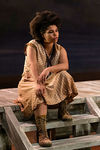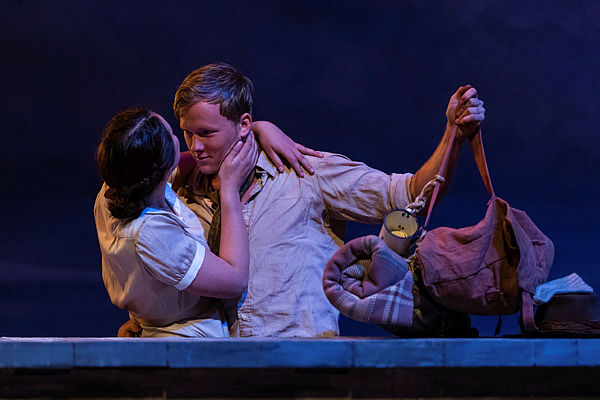October 2015
Last year Liza Mare Syron and I began a journey into the unknown together when we worked on a production of Blood Wedding in the NIDA production season. I chose to place Blood Wedding by Lorca in Griffith, a small rural town in Australia at a particular time in our history which raised the question: Can you present an Australian story in a rural context without consideration of the Aboriginal and Torres Strait Islander experience? The Aboriginal history of Australia is a unique one and quite different to other colonial experiences. There is no 1840 Treaty of Waitangi, nor are there any other numbered treaties like those found in North America. Instead, in Australia there are only silences and the silenced.
Blood Wedding is not an Aboriginal play nor is it written by an Aboriginal playwright so we spent some time considering how the Aboriginal story might be woven into this new interpretation. As the play is not an Aboriginal story, it does not follow the usual practices and processes of working with Aboriginal material. However, ours was an Aboriginal interpretation of a particular time in Australia’s history and it was therefore proper to discuss a process of developing an Aboriginal perspective. The process we developed included good research, equal collaboration, consideration of protocols when needed and a respect for the nuance of the Aboriginal experience within our interpretation.
We continue this exploration together developing and refining our process in our work on Capricornia, Louis Nowra’s epic, irreverent, lyrical and humane saga of life in the Northern Territory, circa 1929 .
In INDIG-CURIOUS Who can play Aboriginal roles? Jane Harrison asks the questions: 'Can non-Aboriginal actors play Aboriginal roles?' and 'Can they do it responsibly?’ The real question for Harrison is not whether non-Aboriginal actors can play Aboriginal roles or not, but whether it is appropriate to do so, and if not, when might it be appropriate. Capricornia presents us with this quandary where our cast are asked to played Aboriginal, non Aboriginal and a range of ethnicities other than their own.
Harrison claims that there is an associated educative outcome where the Aboriginal experience in Australia is investigated through the rehearsal process. This can also be the case in learning environments, such as in school productions. These examples are, for Harrison, appropriate for non-Aboriginal actors to play Aboriginal roles. However, the casting of non-Aboriginal actors in Aboriginal roles in main stage or professional and paid productions is, for Harrison, not appropriate, because a stable of well-trained Aboriginal actors exists.
It is with this in mind that we embarked upon a fascinating and challenging exploration. Always questioning and forever testing our assumptions and perceptions. The student actors took to this challenge with great empathy and responsibility and I see this reflected in their representations.







